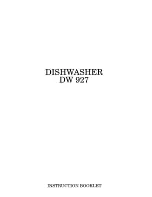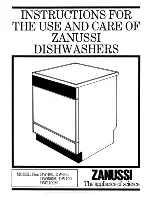
Page 5
GAS REQUIREMENTS
Use only Natural or LP (liquid propane) gases.
THE INSTALLATION MUST CONFORM WITH LOCAL CODES, OR IN THE ABSENCE OF LOCAL CODES,
WITH THE NATIONAL FUEL GAS CODE ANSI/Z223.1, LATEST REVISION (FOR THE UNITED STATES),
OR WITH THE CAN/CGA-B149 INSTALLATION CODES (FOR CANADA).
A gas dryer is equipped with a burner orifice for operation on NATURAL gas.
If the dryer is to be operated
on LP gas, it must be converted for safe and proper performance and must be converted by a
qualified service technician.
Conversion kits from NATURAL to LP, or LP to NATURAL are available
through your local dealer
(see Accessories)
. If other conversions are required, check with the local gas utility
for specific information concerning conversion requirements.
Each dryer will provide an input of 22,000 B.T.U. per hour.
A 1/2 inch gas supply line is recommended and must be reduced to connect to the 3/8 inch gas line on the
dryer.
The internal gas shut-off is accessed by removing the access panel on the dryer. The shut-off is positioned
for easy access near the gas valve.
The National Fuel Gas Code requires that an accessible, approved manual gas shut off valve be installed
within 6 feet of the dryer.
Additionally, a 1/8 inch N.P.T. (National Pipe Thread) plugged tapping, accessible for test gauge connection,
must be installed immediately upstream of the gas supply connection to the dryer.
The dryer must be disconnected from the gas supply piping system during any pressure testing of the system.
DO NOT
re-use old flexible metal gas line. Flexible gas line must be design certified by American Gas
Association (CGA in Canada).
NOTE:
Any pipe joint compound used must be resistant to the action of
any liquefied petroleum gas.
NOTE:
As a courtesy, most local gas utilities will inspect a gas appliance installation.
GAS IGNITION –
The dryer use an automatic ignition system to ignite the burner.
There is no constant burning pilot.
GROUNDING
●
Improper connection of the equipment-grounding conductor can result in a risk of
electrical shock. Check with a qualified electrician or serviceman if you are in
doubt as to whether the appliance is properly grounded.
●
Do not modify the plug provided with the appliance – if it will not fit the outlet,
have a proper outlet installed by a qualified electrician.
●
To prevent unnecessary risk of fire, electrical shock or personal injury, all wiring
and grounding must be done in accordance with the National Electrical Code
ANSI/NFPA, No. 70-Latest Revision (for U.S.) or the Canadian Electrical code
CSA C22.1-Latest Revision (for Canada) and local codes and ordinances. It is
the personal responsibility and obligation of the appliance owner to provide adequate electrical services
for this appliance.
●
All gas installations must be done in accordance with the National Fuel Gas Code ANSI/Z223.1-Latest
Revision (for the U.S.) or the CAN/CGA-B149 Installation Codes-Latest Revision (for Canada) and local
codes and ordinances.
WARNING
!



































